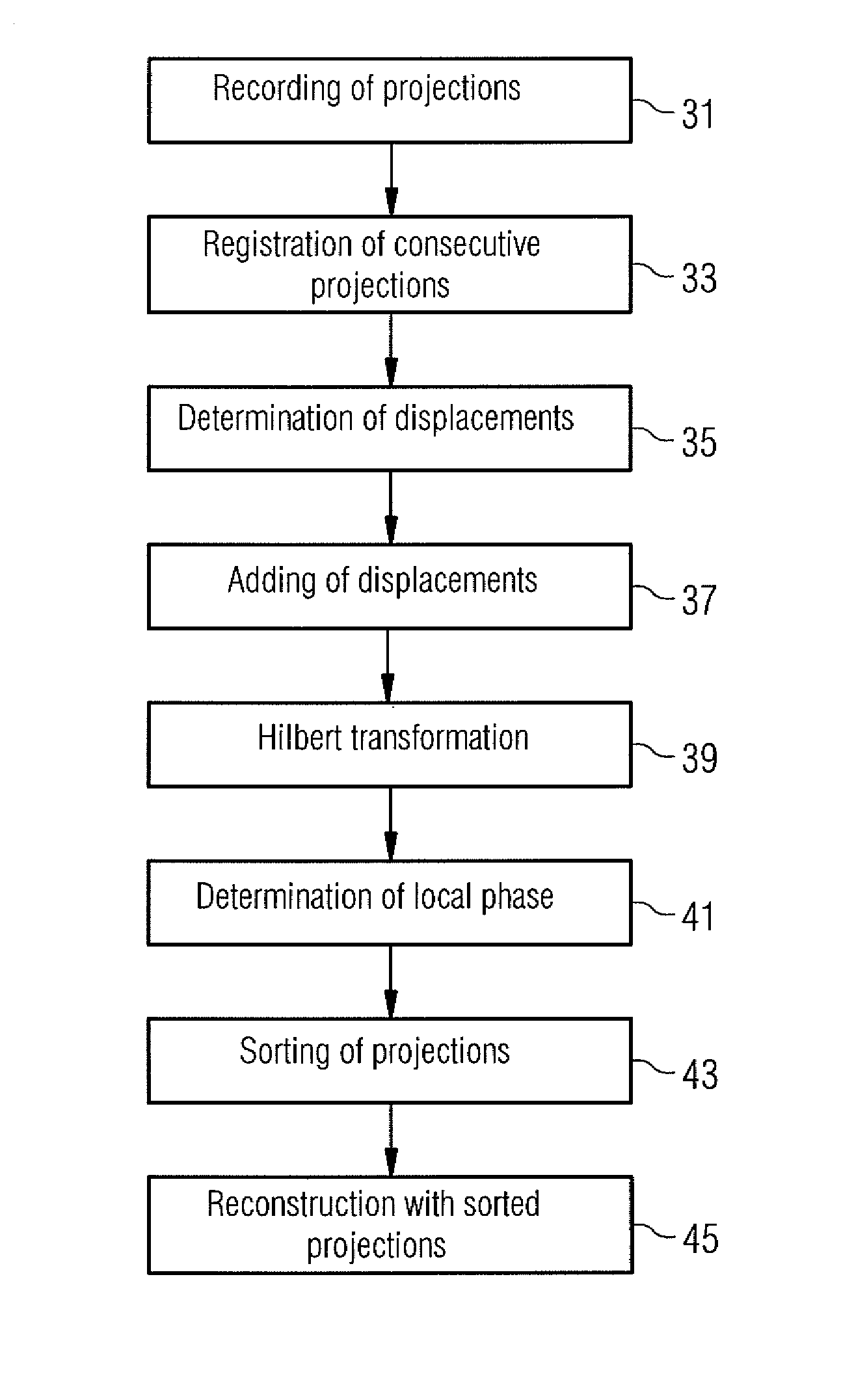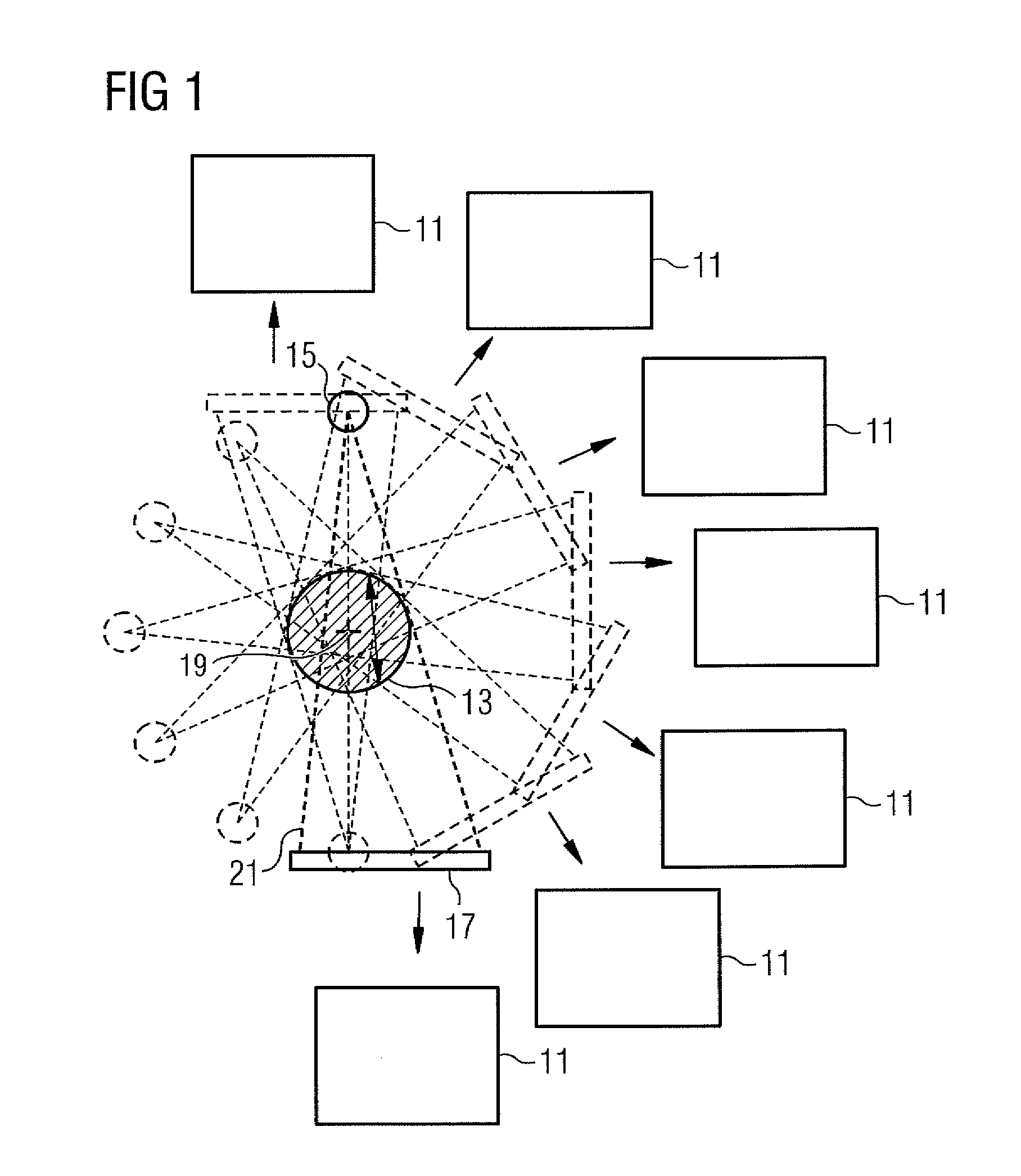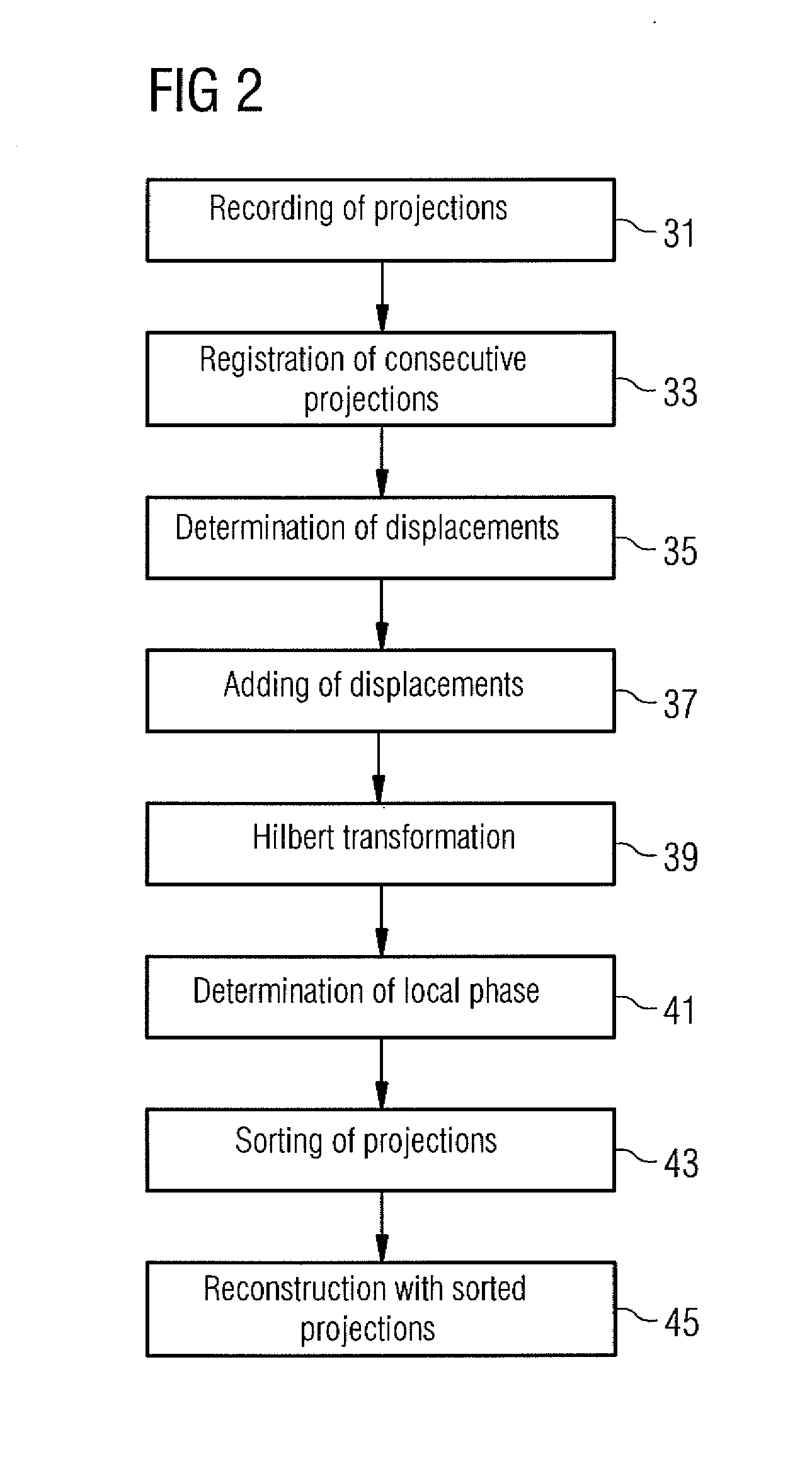Determining a phase of an object movement in a series of images
- Summary
- Abstract
- Description
- Claims
- Application Information
AI Technical Summary
Benefits of technology
Problems solved by technology
Method used
Image
Examples
Example
DETAILED DESCRIPTION OF THE DRAWINGS
[0038]FIG. 1 shows a schematic diagram of cone beam computed tomography that is used to produce projection images 11 of an object 13 to be examined.
[0039]An x-ray source 15 and an x-ray detector 17 rotate about a common center of rotation 19. The x-ray source 15 directs an x-ray cone beam 21 onto the x-ray detector 17. The x-ray detector 17 is in an eccentric position such that the center of rotation 19 does not lie centrally in the x-ray cone beam 21.
[0040]A plurality of projection images 11 are successively produced by rotating the x-ray source 15 and x-ray detector 17. The plurality of projection images 11 form a series of images of the object 13 to be examined.
[0041]Because of a movement of the object 13, which is shown by the arrow in FIG. 1, the object may have one movement phase in one projection image and a different movement phase in another projection image. When performing reconstruction, however, it is advantageous to use projection im...
PUM
 Login to View More
Login to View More Abstract
Description
Claims
Application Information
 Login to View More
Login to View More - R&D
- Intellectual Property
- Life Sciences
- Materials
- Tech Scout
- Unparalleled Data Quality
- Higher Quality Content
- 60% Fewer Hallucinations
Browse by: Latest US Patents, China's latest patents, Technical Efficacy Thesaurus, Application Domain, Technology Topic, Popular Technical Reports.
© 2025 PatSnap. All rights reserved.Legal|Privacy policy|Modern Slavery Act Transparency Statement|Sitemap|About US| Contact US: help@patsnap.com



